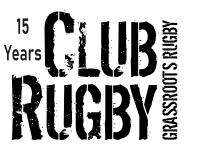Wellington against international teams: versus Wales 1969

Match Details
Result: Wales 14 – Wellington 6
When: 7 June 1969
Weather: Fine, with a fresh northerly
Crowd: 46,000
The Tour
NASA were circling the moon and preparing to put a man on its surface, back on earth Wales were touring New Zealand for the first time as a standalone country. The British Isles team had toured New Zealand in 1966 and were about to again in 1971. This tour was preceded by the French in 1968 and a one-off NZRU centenary Test against Australia in 1967, so was wedged in between.
Accordingly, this Welsh touring squad featured some current and future rugby legends, such as: John Dawes, JPR Williams, Barry John, Gareth Edwards, Phil Bennett Barry Price (the captain) and Merwyn Davis.
New Zealand had previously met Wales on six occasions – all in Wales. Results had seen Wales winning 3-0 in 1905, 13-12 in 1935 and 13-8 in 1953 and the All Blacks winning 19-0 in 1924, 6-0 in 1963 and 13-6 in 1967.
Wales in arrived in New Zealand as Five Nations champions, but this was just a short two-week five-match tour so locals weren’t going to see a lot of them. The All Blacks won the two-Test Series with a 19-0 win in Christchurch and a 33-12 win in Auckland. The Wellington match was their fourth of the tour, following a 9-9 draw with Taranaki, the first Test loss and a 27-9 win over Otago, which proved to be their best performance all tour and put them in a good space ahead of the Wellington fixture. They fielded a ‘shadow’ Test pack in this match.
The Match
Meanwhile, many of Wellington’s leading players of the 1960s, particularly those who were involved in the 1965 and 1966 wins over the Springboks and the British Isles, had moved on or retired. The team was still captained by talisman prop Ken Gray, with flanker Graham Williams coming into his prime.
Other players in Wellington’s team who would wear the black jersey included wings Michael Knight and Owen Stephens, fullback Gerald Kember, centre Mark Sayers and halfback Ian Stevens.
The day of the match dawned fine but breezy, with the now traditional ‘C’mon Wgtn’ parade through the city streets the morning’s entertainment.

Wales had first use of the wind, and after three unsuccessful attempts, wing Keith Jarrett put Wales ahead 3-0 midway through the first half.
Wellington responded with a try. After a near-try to halfback Stevens following breaks by Williams (of Wellington) and No. 8 Andy Leslie, centre Robert Gray broke and kicked ahead. Leslie led the charge and he scored the game’s opening try.
Wales kicked a second penalty, putting them ahead 6-3 at halftime but turning into the wind.
Welliington equalised early in the second spell through a Kember penalty, but Wales re-took the lead with an unconverted try.
Once more, Wellington went close to scoring, Leslie, who the Dominion described afterwards as playing with “diligence and dash”, almost collecting a double when he pounced on a Welsh mistake and kicked ahead.
However, Wales had the last say when their halfback Ray Hopkins scored from a scrum close to the line, giving his side a 14-6 win.
The match finished with an ugly brawl between both sets of forwards. The Dominion described it as such: “…Jarrett had converted the try to make it 14-6 and about a minute after that came the volcanic activity which led to the referee stopping the game.”
“Wellington kicked off, the forwards charged, there was the usual sort of maul which follows a kick-off but suddenly arms flew, fists connected, a player was ejected like a champagne cork and everyone seemed highly interested in belting everyone else.
“The referee, Mr. David Millar, tried hard to blow the brawl to sanity and when he failed, washed out the game [blew fulltime].”
The Teams
Wellington: 1. G.A. Head, 2. P.W.V. Abraham, 3. K.F. Gray, 4. G.C. Williams, 5. P. Delaney, 6. B. Guy, 7. W. J. Nicholls, 8. A.R. Leslie, 9. I.N. Stevens, 10. M. Blackburn, 11. O.G. Stephens, 12. M. Sayers, 13. R.L. Gray, 14. M.O. Knight, 15. G.F.Kember
Wales: 1. D.B. Llewellyn, 2. N.R. Gale, 3. D.J.Lloyd, 4. W.D. Morris, 5. B. Thomas, 6. W.D. Thomas, 7. D. Hughes, 8. T.M. Davies, 9. R. Hopkins, 10. B. John, 11. M.C.R. Richards, 12. S.J. Dawes, 13. A. Skirving, 14. K.S. Jarrett, 15. J.P.R. Williams
The Players
Halfback Ian Stevens (Petone) made his Wellington Lions debut straight out of School in 1967 and went on to play 112 games and remains Wellington’s second most capped back after Bernie Fraser.
Taking over from Brian Coulter who helped Wellington beat the Springboks and British Lions in 1965 and 1966, Stevens played in Wellington’s famous drawn 12-12 Ranfurly Shield challenge against Hawke’s Bay in 1967, received an All Black trial that same year and made the New Zealand U23 side in 1968. Stevens also played a lot at first five-eighth, initially moved there as injury cover for John Dougan and then played so well there he made the 1972 All Blacks at pivot, eventually playing 13 of his 30 All Blacks games at first five-eighth, and also one game as captain (at halfback).
Wing M.O (Michael) Knight utilised sheet pace as his MO. Knight was born in Auckland and played first-class rugby for Hawke’s Bay in 1964, for Counties between 1965-68 and Wellington in 1969-70. He toured Australia with the 1968 All Blacks. In was the National junior 100 years titleholder in 1964 with a dash of 10.4 seconds. As reported in an article earlier this year, Knight scored 24 tries for the Wellington Axemen in 1970 – but this needs to be clarified as it could have been 26 as one contemporary report lists him as kicking ‘two pens’ when apparently he never kicked a goal in his life!
Gerald Kember (University) was a second five-eighth and fullback. He played fullback in this match, but the Dominion’s preview of the game specifically questioned his selection at fullback instead of in the midfield with Mark Sayers and Robert Gray both selected.
From Nelson, Kember played for Wellington in their victory against the British Lions in 1966 and became a regular for the province for the next five years. He earned All Black trials in 1966, 1967 and 1969. In 1970 Kember toured South Africa and earned a call up for the final Test against the Springboks and scored 14 of the All Blacks’ 17 points in a narrow loss. Strangely Kember, who played 19 games for the All Blacks and scored 158 points, never played again. A gifted all-round sportsman, Kember played cricket for the New Zealand Universities
About Mark Sayers (University), veteran rugby journalist Lindsay Knight once wrote, "Sayers was regarded by his contemporaries as one of the best and most influential backs in the game." Sayers played 94 games for his province Wellington and toured with the All Blacks to Great Britain in 1972-73. "Twig" played 15 games and scored four tries. He never played for the All Blacks again.
References
- The Dominion newspaper, 6,7 and 9 June 1969
- Arthur Swan and Gordon Jackson. Wellington’s Rugby History Part 11 1950-1979. WRFU, 1979.
- The Visitors - The History of International Rugby Teams in New Zealand by Rod Chester, Neville McMillan. MOA Publications, Auckland, 1990
- The Encyclopedia of New Zealand Rugby By Ron Palenski, Rod Chester, Neville McMillan. Hodder Moa Beckett, Auckland 1998
- All Blacks A-Z on www.allblacks.com
- Image credit: The Dominion, 7 June 1969
Steven White, 19 Mar 2019
Adam Julian, 19 Mar 2019
Steven White, 12 Mar 2019
Adam Julian, 04 Mar 2019
Steven White, 12 Feb 2019








.jpg)





